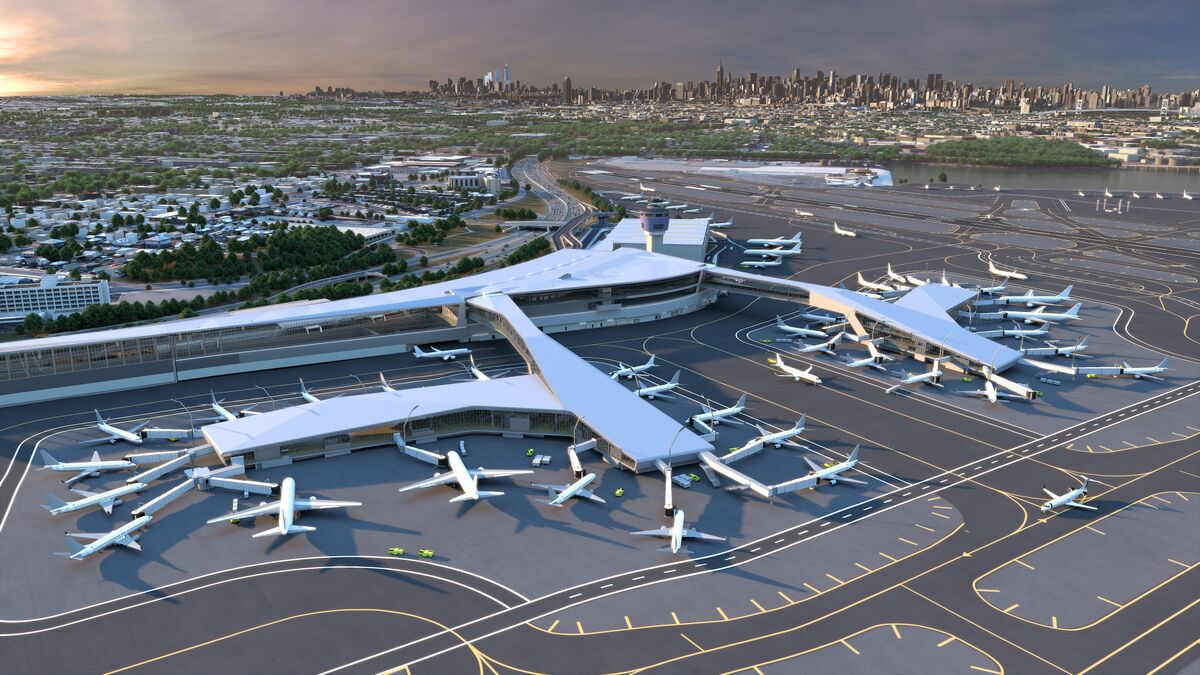Texas has become the development center in recent times. We have seen many groundbreaking infrastructure programs, projects, and facilities. It seems this is the beginning of the development in Texas, and there are other ongoing projects across the region. The modernization process continues, and one other project that has been added is the Dallas-Fort Worth International Airport.
The Dallas-Fort Worth International Airport (DFW) is one of the busiest air travel centers in the world. The airport is now embarking on a historic $9-billion transformation project. This ambitious decision was recently made to transform and modernize the airport’s terminal, airfield, and overall air transport system. The main purpose of extending and modernizing the airport is to meet the growing demand for passenger traffic.
It is a much-needed transformation because Dallas-Fort Worth International Airport is the busiest airport in the region, and it needs to be more advanced and fast-tracked. This transformation aims to enhance the travel experience and secure DFW’s place as a top aviation hub for years to come.
A vital step forward
The modernization of DFW Airport comes at the right time. The aviation demand is increasing and passenger demand is getting high. At this crucial point, the transformation of this major airport represents a vital step forward.
The reimagining of Terminal C is an important step to ensure that DFW Airport maintains its status as a leading aviation hub. The focal point of the reconstruction operation will be Terminal C, the busiest and most outdated facility. Not only will the upgrades be necessary, but they will also improve the airport’s capacity to manage the increasing number of passengers expected in the upcoming years.
Rebuilding Terminal C: The core of the transformation
Terminal C has long been a cornerstone of DFW Airport but is now due for a comprehensive rebuild. The terminal’s outdated facilities no longer meet the requirements of modern travelers, and the planned upgrades aim to address these flaws.
Numerous crucial aspects of Terminal C will be improved by the rebuilding, including additional interior space and security. DFW plans to expand the area to accommodate more stores, eateries, and other passenger amenities as part of the redevelopment. This includes redesigning restrooms to offer a better degree of comfort and modernizing security checkpoints to make travel for passengers more seamless.
We’ll use a step-by-step strategy to minimize interruptions. Parts of the terminal will be expanded and modernized in the first phase, setting the stage for later demolition and reconstruction in the second and third phases. The airport will continue operations thanks to the staggered construction, which will ensure continuous progress toward completion.
Enhancing terminal A and expanding gate capacity
The transformation of Dallas-Fort Worth Airport not only includes Terminal C but also involves redesigning Terminal A and expanding the capacity of the gates. Terminal A will receive a 140,000-square-foot expansion, with five new gates added to enhance capacity. This work will take place concurrently with the Terminal C rebuild, helping to increase the overall functionality of the airport.
Terminal C will feature a 115,000-square-foot addition that will include four additional gates. The capacity of DFW to handle higher air traffic flows will be significantly improved, resulting in more effective gate operations and reduced passenger wait times.
Furthermore, the existing facility will be replaced with an updated parking structure equipped with advanced parking technologies. In mid-September, the current parking structure will close for demolition to make space for a more technologically advanced and user-friendly parking system.
Infrastructure and environmental improvements
Beyond passenger requirements, DFW is also looking to improve sustainability with the construction of an electric central utility plant. This plant will be powered entirely by renewable resources, aligning with the airport’s long-term commitment to reduce its carbon footprint. The heavy machinery used for the project will also be electric-powered.
In addition to the central utility plant, the project includes upgrades to the airport’s roadways. A new east-west thoroughfare will enhance traffic flow around the airport, making it easier for vehicles to navigate through the complex. This road expansion will alleviate congestion, enhance safety, and reduce travel times for passengers arriving at or departing from DFW.
The airport’s fire station will also be upgraded as part of the project. Ensuring advanced fire protection infrastructure is a critical safety measure, especially given the increasing passenger and aircraft traffic.
Economic and regional impact
The $9 billion transformation of DFW Airport will have far-reaching effects beyond the aviation industry. Not only does it provide economic advantages to the aviation industry but also beneficial for other sectors most noticeably used heavy equipment sectors in Texas. With hundreds of new jobs created during the rebuilding phase, the project will stimulate economic growth in the region. Local companies involved in the construction, design, and management of the project will benefit from the influx of capital.
Moreover, the enhanced capacity and functionality of DFW are expected to attract more airlines, boost tourism, and make the region more business-friendly. The airport’s ability to accommodate more flights and larger numbers of passengers will support economic growth in Dallas-Fort Worth.
Addressing the needs of the future
The modernization of DFW is about more than just keeping up with current trends—it’s about preparing for the future. DFW Airport is already one of the busiest in the world, and the demand for air travel is only expected to grow. By investing in these major upgrades, the airport is ensuring that it remains a key player in the global aviation industry for decades to come.
Terminal C, which is scheduled to be completed by 2030, will be a fully modernized facility that can handle higher passenger volumes with greater efficiency. The added gates in Terminals A and C, along with the 15-gate expansion of Terminal F, will not only address current capacity issues but also provide space for future growth.
Moreover, the emphasis on sustainability in the project, especially with the electric central utility plant, reflects a broader trend in the aviation industry toward greener practices. As DFW expands its facilities, it is also minimizing its environmental impact, which is a key consideration for long-term success.
Conclusion
The DFW Forward project represents a bold step in the transformation of one of the world’s busiest airports. By modernizing terminals, expanding gate capacity, and investing in sustainable infrastructure, Dallas-Fort Worth International Airport is positioning itself as a leader in both efficiency and environmental stewardship.
As construction progresses and terminals are rebuilt, the airport will be better equipped to meet the needs of future travelers. With an eye toward innovation and sustainability, DFW’s $9-billion transformation will ensure that it continues to be a key hub in global aviation, while also providing significant economic benefits to the surrounding region.



